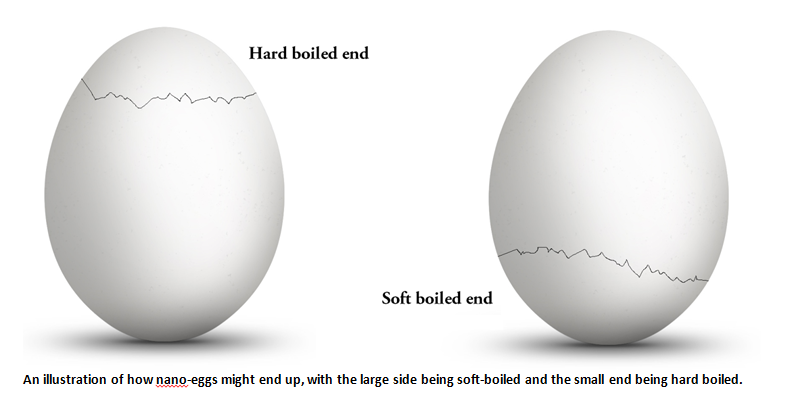
Wars fought over eggs:
In Jonathan Swift’s famous book from 1726, and from the 2010 movie, Gulliver is shipwrecked at the island Lilliput where very tiny people live. It turns out that these Lilliputians are in war for something that seems absolutely absurd: the correct side of breaking a boiled egg.
One population believes that the correct side is the larger end and therefore they are in war with the other population. They believe that all eggs need to be broken at the smaller end. Gulliver is flabbergasted as these eggs are so tiny that he can’t even see the difference. Moreover, for the taste it wouldn’t matter at which side you break the eggs, does it? Swift used this egg-quarrel as a metaphor to criticize the political conflicts between Catholics and Protestants.
But how absurd is this story?
Knowledge on nanoscale
Through our research at the applied theoretical chemistry group at NTNU we have, for the first time, developed an accurate method based on both molecular simulations and theory. The method can predict heat and mass transfer through curved interfaces at the nanoscale. Whereas curvature is mostly insignificant for these processes for macroscopic objects, at the nanoscale things are completely different. The interfaces of nanobubbles and nanodroplets conduct heat in an uneven way depending on their shape and size.
We have calculated how the heat conductance is distributed at the interface of such nano-objects. Our work, which was recently published in the prestigious Physical Review Letters, shows examples like an oblate spheroidal droplet, a prolate spheroidal bubble, and a toroidal bubble; things that respectively look like a nanosized M&M candy, rugby ball, and a doughnut.
This knowledge is of fundamental importance since it will for instance help to understand the shape of snowflakes formed from tiny ice seeds, or how gas bubbles grow, which often start out from nanosized cavities. In addition, the theory will also be useful for designing the next generation nanodevices with specific properties. For instance, the method could be useful in the development of heat diodes and heat-transistors.
Size does matter
Now, coming back to the story of Gulliver and the Lilliputians. Was the reason for this war really that absurd? Gulliver’s reasoning that is doesn’t matter for the taste is certainly true for our macroscopic eggs, but given the small size of the eggs in Lilliput-land, we might expect a different heat current at the two sides when the egg is being boiled. According to our method will the small end side of the egg be hard boiled and the larger end will be soft boiled.
Hence, although the average taste of the egg is independent of at which side you open it, it will matter for the first bite. And let’s be frank, the average taste of a dinner will not change if you start with dessert and end with the main meal, the gastronomical experience will be different. Still not enough to start a war, but the whole egg-quarrel is maybe not as absurd as Gulliver thought.
Blog text written by Titus van Erp and Øivind Wilhelmsen

